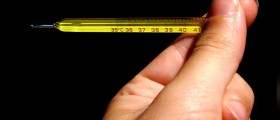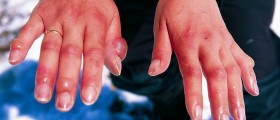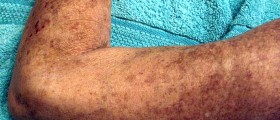
Basically, frostbite is a condition which takes place due to excessive exposure to extremely low temperatures. It manifests through tissue, skin and blood vessel damage and takes place as soon as the exposure temperature is below 23 degrees Fahrenheit.
Even though frostbite affects all parts of our body, it predominantly damages our hands, feet, ears and nose. Many factors influence the damage done. For example, time of exposure, temperature, air humidity, presence of wind and clothing you are wearing, all have impact on the frostbite damage you are to sustain. Certain health conditions go hand-in-hand with frostbite, such as hypothermia, which manifests through deadly decrease of bodily temperature.
All in all, whenever you are exposing yourself to low temperatures, it is good to know what the symptoms of frostbite are, so that you can react timely should these take place.
Symptoms of Mild Frostbite
Since frostbite manifests in different stages, the same way burns do, there is a mild and deep variant of this condition.
The mild one starts with the pins and needles sensation in the area affected. Frostbitten parts of your body become numb, cold and white, aching and tingling. This is a condition commonly seen in people who work in low temperature areas. If you remain in such conditions for long, the symptoms are likely to become more severe, with the tissues in the area appearing frozen and hard.
Once the affected person exposes the frostbitten areas to heat, these will appear to be blistered and extremely painful. Swelling and itching may be present too. In these cases, it is best to seek medical assistance and have the area properly treated and checked for skin damage.
Symptoms of Deep Frostbite
When symptoms of mild frostbite evolve into more serious ones, the skin becomes completely white or even blue. Additionally, it turns blotchy and very hard to the touch. When this happens, your tendons, muscles and even bones and nerves are likely to be damaged.
When such variant of frostbite is exposed to heat, the skin gets blistered severely. The blisters turn to black scabs which are signs of permanent tissue damage and a possibility of gangrene. If gangrene takes place, amputation of the affected parts is necessary, so as to stop infections from affecting the victim's body. Loss of sensations in the area may remain permanent, as well as an increased sensitivity to cold.
Signs of Hypothermia and Treatment of Frostbite
If frostbite seems to be affecting your body, you are likely to suffer from hypothermia as well, especially if you are shivering, experiencing pale skin, speaking difficulties or poor judgment. As the condition becomes more severe, breathing difficulties may affect you, your pulse may drop and you may feel sleepy and week.
While treating frostbite, react timely and expose the area to water, having a constant temperature of about 105 degrees Fahrenheit. Keep the area exposed for about an hour, regulating pain with painkillers and avoiding rubbing the area since you may damage the skin this way.





-in-Multiple-Sclerosis_f_280x120.jpg)











Your thoughts on this
Loading...